U.S.S. Brooklyn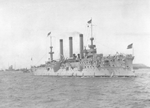
 |
#1: The U.S.S. Brooklyn in holiday dress. Admiral Schley's armored cruiser was the principal target of the enemy and was hit often and reported more casualties than any other vessel.
Photographic History of Spanish-American War, p. 334. #2: The U.S.S. Brooklyn fought off the Spanish ship the Cristobal Colon and played an important part in the sea fight off the coast of Santiago on July 3, 1898.
Photographic History of Spanish-American War, p. 265. |
U.S.S. Chicago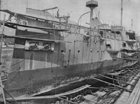 |
Repair was needed for the battleship U.S.S. Chicago, including replacing the rig and placing new machinery such as a new battery of rapid-firing guns.
Photographic History of Spanish-American War, p. 52. |
U.S.S. Columbia |
In May 1898 the U.S.S. Columbia collided with a British merchant steamer. It was the first serious mishap to befall any vessel of the U.S. Navy after the outbreak of the war.
Photographic History of Spanish-American War, p. 150. |
U.S.S. Constitution |
The U.S.S. Constitution at Charlestown Navy Yard in Boston, Massachusetts. This war ship carries guns on two decks.
Photographic History of the Spanish-American War, p. 161. |
U.S.S. Cushing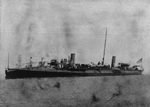 |
Torpedo Boat the U.S.S. Cushing.
Photographic History of the Spanish-American War, p. 265. |
U.S.S. Dolphin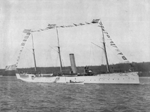 |
Commanded by Henry W. Lyon, this dispatch boat carried the flag of the President and Secretary of the Navy for 12 years and carried more distinguished guests than any other boat in the U.S. Navy. The U.S.S. Dolphin was one of the first modern ships constructed for naval service in the U.S. During the war it was transformed into a war-vessel and at Guantanamo Bay, along with the U.S.S. Marblehead, the U.S.S. Dolphin protected U.S. Marines from defeat.
Photographic History of the Spanish-American War, p. 192. |
U.S.S. Helena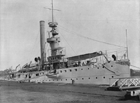
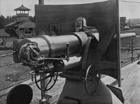
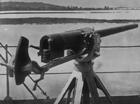 |
#1: The U.S.S. Helena was a rapid-fire gunboat with 1,600 horsepower. On July 21, 1898, with six consorts, it destroyed five Spanish gunboats, a transport, and other vessels at Manzanillo.
Photographic History of the Spanish-American War, p. 79. #2: Detail of a rapid-fire gun on board the U.S.S. Helena.
Photographic History of the Spanish-American War, p. 80. #3: Detail of a Driggs-Schroeder rapid-fire gun on board the U.S.S. Helena. This rapid-fire gun was capable of firing 20 shells a minute and thus was key weapon in the destruction of Spanish Admirals Montojo and Cervera's fleets.
Photographic History of the Spanish-American War, p. 81. |
U.S.S. Iowa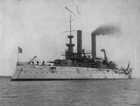 |
The U.S.S. Iowa was the biggest battleship in the U.S. fleet. It was involved in the first bombardment of the fort near Santiago. It cost three million dollars to build and was equipped with 11,000 horsepower.
Photographic History of the Spanish-American War, p. 147. |
U.S.S. Katahdin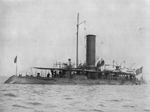 |
The U.S.S. Katahdin was a harbor defense ram with a gigantic projectile, and at the time of the war was the only vessel of its type in the world. It was held in reserve during the war for possible harbor defense; there was never an opportunity to display its efficiency.
Photographic History of the Spanish-American War, p. 166. |
U.S.S. Lehigh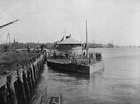 |
The U.S.S. Lehigh was a monitor boat specifically used for harbor defense of the New England coast.
Photographic History of the Spanish-American War, p. 162. |
U.S.S. Marblehead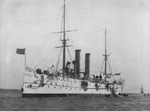 |
On June 8, 1898, along with the U.S.S. Yankee, the U.S.S. Marblehead bombarded the shore at Guantanamo while the U.S.S. St. Louis cut the French cable. The boat cost $674,000.
Photographic History of the Spanish-American War, p. 170. |
U.S.S. Miantonomoh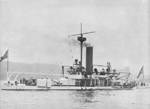 |
The U.S.S. Miantonomoh was the first armor vessel of the new army.
Photographic History of the Spanish-American War, p. 319. |
U.S.S. New Orleans
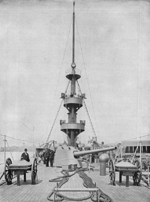 |
#1: The U.S.S. New Orleans was bombarded at Santiago on May 31, 1898.
Photographic History of the Spanish-American War, p. 66. #2: The military mast of the U.S.S. New Orleans included three tops. The two lower ones were used for rapid-fire and machine guns, and the top one was used for the electric search light.
Photographic History of the Spanish-American War, p. 188. |
U.S.S. New York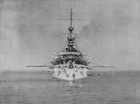 |
This armored cruiser was used as a battleship under the command of Rear-Admiral Sampson. It was the ship from which the first shot was fired; on April 27, 1898, the vessel bombarded Matanzas.
Photographic History of the Spanish-American War, p. 98. |
U.S.S. Oregon |
On Saturday, August 20, 1898, the Oregon returned to New York City. The ship travelled a total of 14,000 miles.
Photographic History of the Spanish-American War, p. 332. |
U.S.S. Solace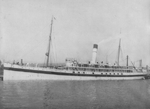 |
The hospital ship U.S.S. Solace was fitted out by the U.S. Government especially for the convenience and comfort of the sick and the wounded. It conveyed the sick and wounded from the theater of war to U.S. hospitals at such places as Tampa, Florida.
Photographic History of the Spanish-American War, p. 284. |
U.S.S. Texas |
A Spanish ship sucessfully damaged the U.S.S. Texas.
Photographic History of the Spanish-American War, p. 329. |
 Library of Congress
Library of Congress